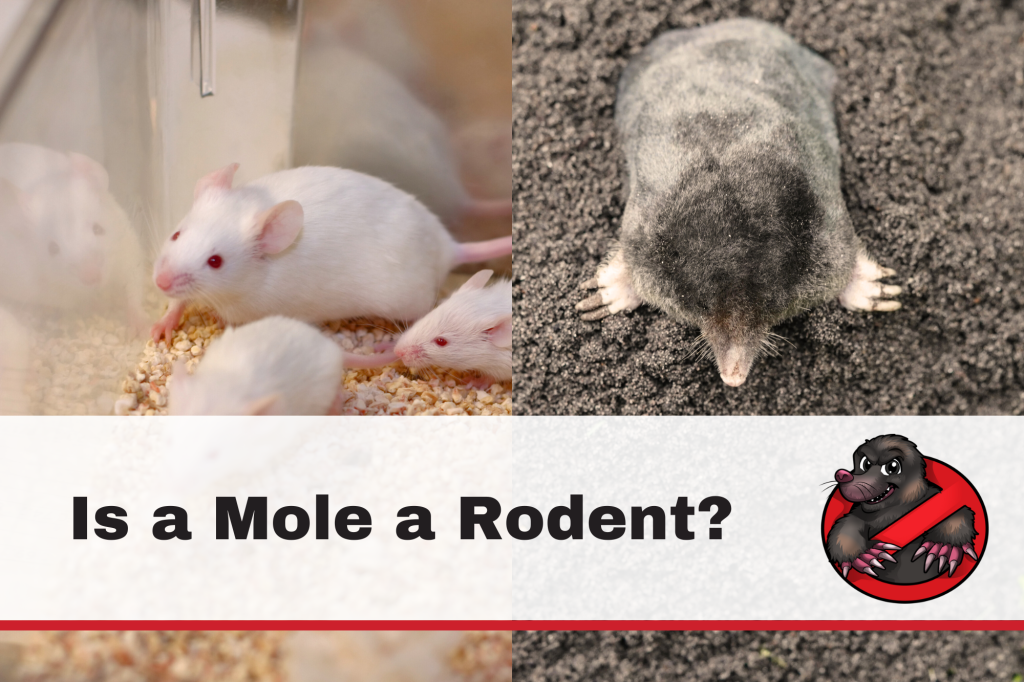
Is a Mole a Rodent?
Moles are fascinating creatures that often become a point of discussion, especially when they decide to take up residence in your yard. One of the most common questions people ask when encountering these subterranean diggers is: “Is a mole a rodent?” Let’s dive into the details to clear up this common misconception.
What is a Rodent?
Rodents belong to the scientific order Rodentia and include animals like rats, mice, squirrels, beavers, and guinea pigs. The key characteristic that defines rodents is their ever-growing incisor teeth, which they use for gnawing on various materials. This unique dental trait requires them to constantly chew to keep their teeth from becoming overgrown.
Moles are Not Rodents
While moles might share some traits with rodents, they actually belong to a different order entirely: Eulipotyphla. This order includes other insectivores like shrews and hedgehogs. Interestingly, moles are actually more closely related to tigers and deer than they are to rodents. Believe it or not, humans are more closely related to rodents than moles are (meaning humans share a common ancestor that is more recent than the common ancestor of moles and rodents). Humans and rodents both belong to the superorder Euarchontoglires, while moles belong to a separate superorder (Laurasiatheria) which both descend from the magnorder Boreoeutheria. The common ancestor of moles and rodents lived around 100 million years ago; the common ancestor of humans and rodents lived around 85 million years ago.
Key Differences Between Moles and Rodents
-
Diet
- Rodents are generally herbivores or omnivores, feeding on a mix of plants, seeds, grains, and sometimes insects.
- Moles, on the other hand, are strict insectivores. They primarily eat earthworms, grubs, and other small invertebrates found in the soil. This diet is a significant indicator that moles are not rodents—they have no interest in the plant-based diet favored by most rodents.
-
Teeth Structure
- Rodents are known for their sharp, ever-growing incisors, which are essential for gnawing.
- Moles do not have these specialized incisors. Instead, they have pointed, sharp teeth adapted for catching and eating insects. Their teeth are well-suited for their underground lifestyle, but they lack the gnawing capabilities of rodents.
-
Physical Adaptations
- Moles are uniquely designed for life underground. They have large, paddle-like forelimbs with strong claws for digging, small eyes, and an elongated snout to sense prey in the dark soil.
- Rodents tend to have more generalized bodies, adapted for climbing, running, or burrowing, depending on the species. The rodent’s body is not as specialized for a subterranean lifestyle as that of a mole.
-
Habitat and Behavior
- While some rodents are burrowers, moles are specialized tunnelers. They create intricate networks of tunnels to hunt for food and establish territories.
- Rodents typically don’t dig extensive tunnel systems for hunting. Instead, they burrow for shelter and storage. The mole’s tunnel networks are designed to capture their favorite food—earthworms—by allowing them to sense vibrations from the surface.
Why Do People Confuse Moles with Rodents?
The confusion often arises from the fact that moles and rodents can cause similar problems for homeowners. Moles’ tunneling can lead to unsightly dirt mounds and damage to lawns, similar to the way some burrowing rodents like gophers operate. However, their motives and methods are quite different.
The key takeaway is that moles are more closely related to shrews and hedgehogs than to rats or mice. They have evolved as specialized insect hunters with a unique set of adaptations tailored to their underground lifestyle.
Why Understanding This Difference Matters for Pest Control
Recognizing that moles are not rodents is crucial for effective pest control. Rodent control techniques often involve baiting and traps that target their plant-based diet, which won’t work on a mole’s insect-driven appetite. Proper mole control requires an understanding of their behavior, habitat, and diet, which is why specialized services like Got Moles? focus specifically on mole control strategies that address their unique needs.
Conclusion: Moles—The Insectivores of Your Yard
So, to answer the question, no, moles are not rodents. They are unique, insect-eating mammals that play a particular role in the ecosystem. However, when their tunneling habits cause damage to your property, it’s time to call in the experts who know the difference—experts like Got Moles?—to handle the problem in the most effective way possible. Understanding what moles are (and aren’t) helps you choose the right solutions for keeping your yard mole-free.
For more tips on dealing with mole invasions, or to learn about our specialized pest control services, contact Got Moles? today!

